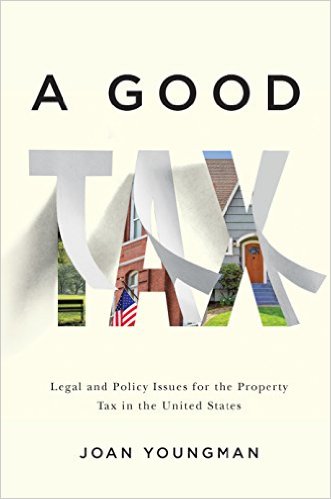Book Club Review: A Good Tax, Chapter 3

This post is a part of our Local Government book club series. Join us in reading A Good Tax: Legal and Policy Issues for the Property Tax in the United States by Joan Youngman. This week’s post focuses on the third chapter of the book.
How we assess or value property is a central issue to the property tax. Youngman starts out Chapter 3 stating, “Although market price is a quantitative measure, terms such as fair market value and highest and best use suggest the equitable dimension of this calculation.” While a market value approach to property tax valuation is prevalent across the country this chapter delves in to the tweaks and distortions to a true ad valorem assessment system.
Market value is seen as having several benefits: it feels fair, it’s responsive to economic development, and builds value capture into the property tax system. Of course, it has its challenges as well: each property is unique, its value is influenced by numerous characteristics and factors, not every property sells every year, and annual reassessment can be a timely and costly endeavor for local governments.
In Indiana, our constitution calls for “a uniform and equal rate of property assessment and taxation.” After an Indiana Supreme Court decision in 1998 deemed the then-current assessment methods as unconstitutional, Indiana adopted an assessment system based on market value. The state code refers to the assessment placed on real property as the “true tax value.”
So are true tax value and market value one in the same? Reading further into Chapter 3 delivers the typical economist’s response: it depends. It depends on whether the property is currently being used for the highest and best use. Youngman points out that the term “highest and best use” causes confusion, partly because it seems to suggest a value judgement. For property assessment, highest and best use does not mean the most noble or worthy use of the property. It means the most profitable use.
Market value is the value of a property if it was placed on the market and sold to a disinterested stranger. The highest bidder would presumably have considered the highest and best use of the property and bid accordingly without regard to the current use of the land. But in Indiana we assess at the market value if sold to a disinterested stranger who would continue to use the property as its current use: market value-in-use. It seems like a small difference, but consider farmland or a home on land under demand for commercial development. The value of the land is much higher to a commercial developer than it is to someone who will continue its current use of farmland or a single family home. In Indiana farmland is assessed the same whether it’s in Marion County or Benton County. More on this in Chapter 8.
Highest and best use in itself can be difficult to determine. Youngman states highest and best use “acknowledges that market price generally will reflect the most profitable use that is legal and feasible.” Highest and best use is not determining potential future value but should take into account reasonable future use if it impacts the current market value of land. In many cases, the current use may be the highest and best use of that land.
If you remember from Chapter 1, one of the benefits of a tax on land is that it does not alter behavior. However, a market value-in-use system introduces the possibility of economic or social losses as it could impact an owner’s decision on how to utilize their land.
Considering the implications of a market value-in-use system is just one concept explored in Chapter 3. Read more about how the use of cost data rather than market value in Nassau County, New York led to a greater property tax burden on an impoverished resident. Or how California responded to rapidly increasing values with Proposition 13 capping annual growth of assessed value and influencing property owners selling decisions years later. Or how the existence of leases or other contractual interests on property can influence its assessment, which could end up penalizing good property management. How we assess property can greatly impact the incidence of tax and efficiency of the property tax system.
Tamara Ogle, Regional Community Development Educator, togle@purdue.edu




